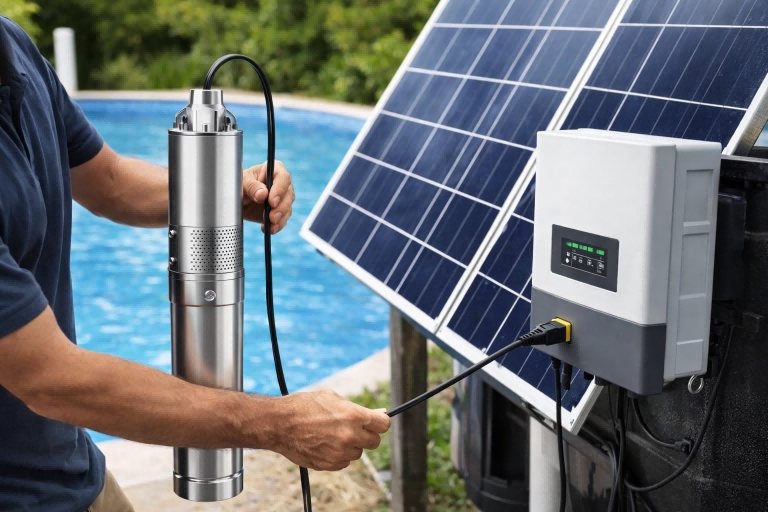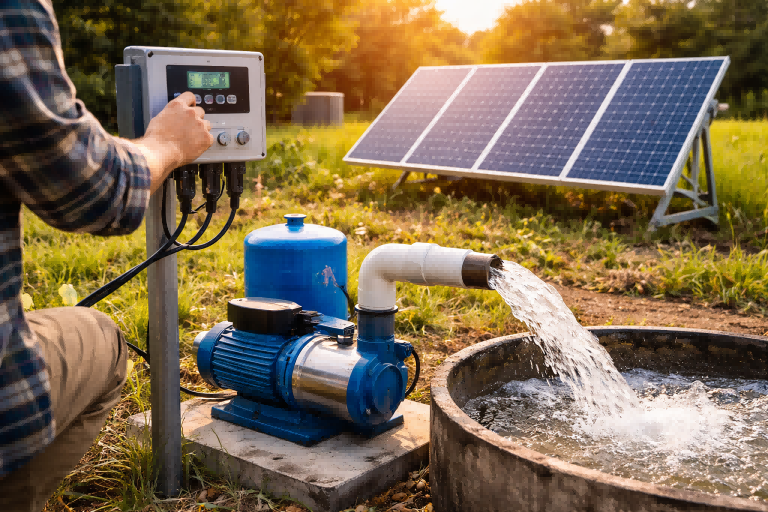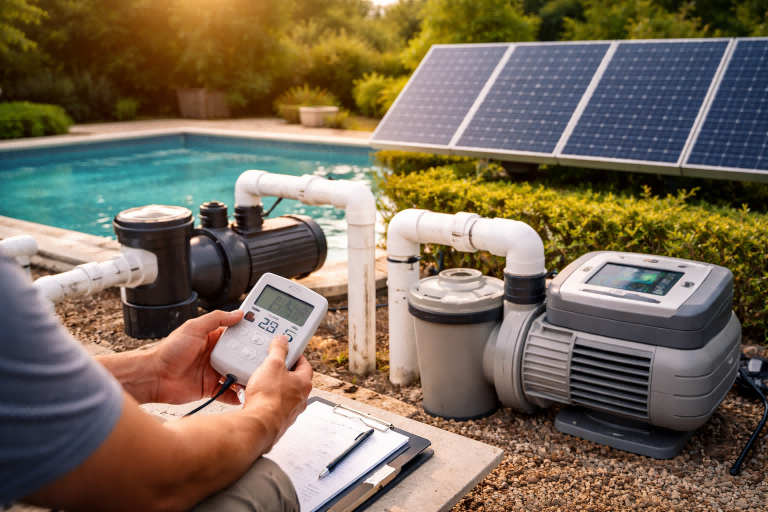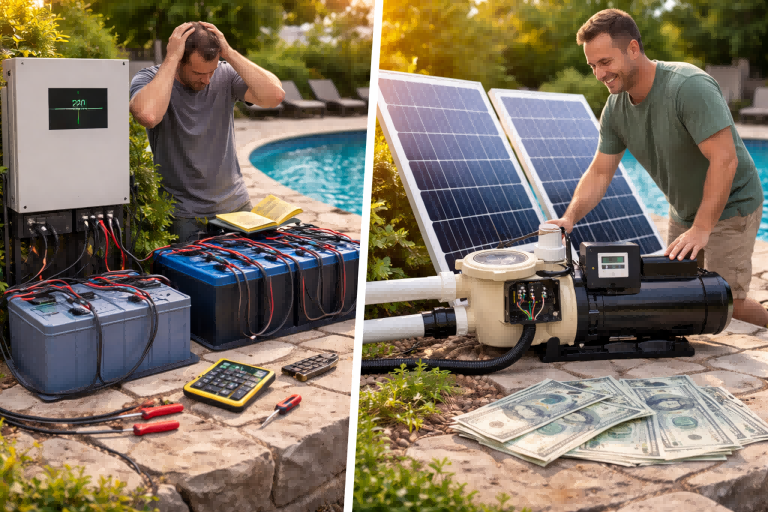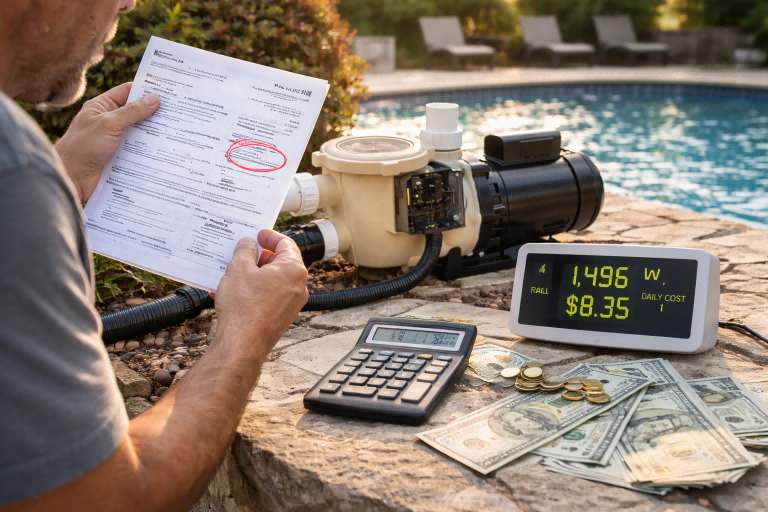Struggling with uneven watering and high water bills?
An improperly designed sprinkler system can lead to dry patches and wasted water, costing you money and damaging your landscape.
The number of sprinkler heads per zone depends entirely on your home's water pressure (PSI) and water flow rate (GPM).
Typically, you first determine the GPM for each specific sprinkler head model, then divide your zone's total available GPM by that number to find the maximum heads allowed.
Zoning your sprinkler system correctly is the foundation of an efficient and effective irrigation setup.
Without proper zoning, you risk overwhelming your water supply, leading to poor performance and potential damage to your pump.
This guide will break down the essential factors for you.
We will help you calculate exactly how many sprinkler heads your system can handle for a lush, healthy lawn.
Let's ensure every drop of water is used wisely.
Understanding Water Pressure (PSI): The Pushing Force
Struggling with sprinkler heads that don't pop up or spray far enough?
Low water pressure is often the culprit, leading to inadequate coverage and brown spots in your lawn.
Water pressure, measured in Pounds per Square Inch (PSI), is the force that pushes water through your pipes.
Most sprinkler heads have an optimal operating pressure range, typically between 30 and 50 PSI, which is crucial for achieving their specified spray distance and pattern.
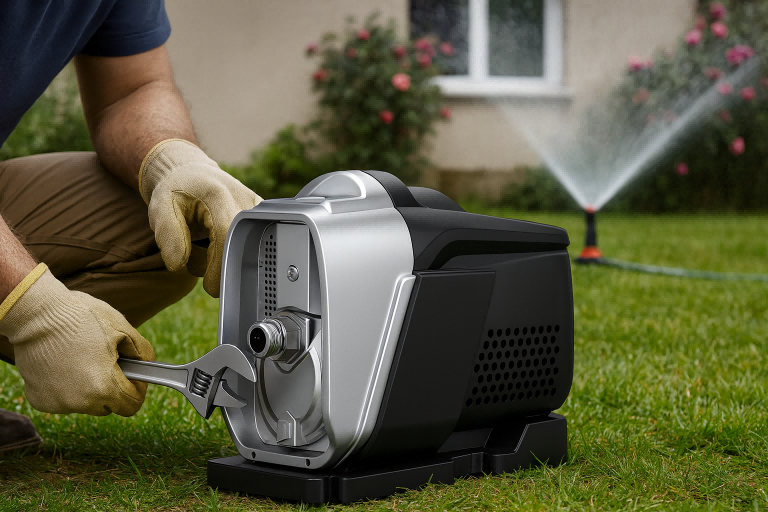
Understanding your home's specific PSI is the first critical step in designing an effective irrigation system.
Without this knowledge, you are essentially guessing.
Let’s dive deeper into what PSI means for your sprinkler system and how to measure it accurately.
What is Static vs. Dynamic Pressure?
First, it’s important to know there are two types of pressure.
Static pressure is the water pressure in your pipes when no water is running.
You can measure this easily with a pressure gauge attached to an outdoor spigot.
Dynamic pressure, on the other hand, is the pressure when water is actually flowing through the system.
This is the more important number for sprinkler design.
Dynamic pressure will always be lower than static pressure due to friction loss.
The Role of Friction Loss
Friction loss is the reduction in pressure as water moves through pipes, valves, and fittings.
Longer pipe runs, smaller pipe diameters, and more components all increase friction loss.
This means the pressure available at a sprinkler head far from the source will be lower than at one nearby.
You must account for this loss in your calculations.
Failing to do so can result in the last heads on the line having very weak spray.
A well-designed system minimizes friction loss by using appropriately sized pipes.
How to Measure Your PSI
Measuring your static pressure is simple and essential.
- Get a water pressure gauge: You can find these at any hardware store.
- Attach it to a spigot: Make sure all other water sources in your house are turned off.
- Turn the spigot on fully: The reading on the gauge is your static water pressure.
This gives you a baseline.
For dynamic pressure, you would need more advanced tools, but you can estimate it by subtracting the expected friction loss from your static pressure.
| Factor | Description | Impact on PSI |
|---|---|---|
| Pipe Diameter | The width of your pipes (e.g., 3/4 inch, 1 inch). | Smaller pipes create more friction, lowering dynamic PSI faster. |
| Pipe Length | The total distance water travels from the source to the last head. | Longer runs significantly increase friction loss and decrease available PSI. |
| Elevation Changes | Changes in height across your property. | For every foot of elevation gain, you lose about 0.433 PSI. |
| Fittings | Elbows, tees, and valves in the system. | Each fitting adds a small amount of friction, cumulatively reducing PSI. |
Knowing your PSI is non-negotiable.
It dictates which sprinkler heads you can use and how well they will perform.
Low pressure might require a booster pump, while very high pressure may need a pressure regulator to prevent misting and damage.
Measuring Water Flow Rate (GPM): The Available Volume
Wondering why your sprinkler heads create a weak mist instead of a healthy spray?
You might be demanding more water than your system can supply, a problem directly related to your water flow rate.
Water flow rate, measured in Gallons Per Minute (GPM), is the volume of water moving through your pipes over a set time.
It determines the total amount of water your system can supply at once, limiting how many heads can run simultaneously on a single zone.
Your available GPM is a hard limit.
Exceeding it will cause a significant drop in pressure and performance across the entire zone.
This is why accurately measuring your GPM is just as critical as knowing your PSI.
Let's explore how to find your GPM and what it means for zoning your system.
The Bucket Test: A Simple GPM Measurement
You don't need fancy equipment to find your GPM.
The "bucket test" is a reliable and easy method.
- Get a bucket of a known size: A 5-gallon bucket is perfect for this.
- Use an outdoor spigot: Choose the one closest to your water meter or where your sprinkler system will connect.
- Time the fill: Turn the spigot on completely and use a stopwatch to time how long it takes to fill the bucket.
- Do the math: Use the formula
(Bucket Size in Gallons / Time in Seconds) x 60 = GPM.
For example, if it takes 30 seconds to fill a 5-gallon bucket, your calculation is (5 / 30) x 60 = 10 GPM.
This 10 GPM is the maximum flow rate your system can provide.
It's a good practice to take about 80-90% of this value for design purposes to create a safety margin. So, in this case, you would design your zones for 8 to 9 GPM.
Factors That Influence Your GPM
Several components of your plumbing system dictate your maximum GPM.
Understanding them helps you see the bigger picture of your home's water capacity.
| Component | How It Affects GPM | Typical Size/Limitation |
|---|---|---|
| Water Meter | The meter itself has a maximum flow rating. | Common residential meter sizes are 5/8" or 3/4", each with a max GPM. |
| Service Line | The pipe from the street to your house. | The diameter of this line is a primary bottleneck for your total available GPM. |
| House Plumbing | The size and material of the pipes inside your house. | Older homes with smaller galvanized pipes may have lower GPM than modern homes with larger copper or PEX pipes. |
Why GPM is Key for Zoning
Zoning is the practice of grouping sprinkler heads together to run on a single valve.
The fundamental rule of zoning is that the total GPM requirement of all heads in a zone cannot exceed the available GPM of your water supply.
If a zone needs 12 GPM but you only have 10 GPM available, none of the heads will work correctly.
They will all receive less water than they need, resulting in low pressure and poor coverage.
This is why you must calculate the total GPM for each planned zone before you build anything.
It guides every decision, from the type of heads you choose to the layout of your pipes.
Calculating Sprinkler Head GPM: Matching Heads to Your System
Are you trying to mix different types of sprinkler heads in one zone?
This is a common mistake that leads to overwatering some areas and underwatering others, all because different heads use different amounts of water.
Every sprinkler head has a specific GPM rating, which varies based on the nozzle installed and the operating pressure.
To design a zone, you must add up the GPM of all individual heads to ensure the total is below your system's available GPM.
You can't just pick heads based on how far they spray.
You must consult the manufacturer's performance charts.
These charts are the key to matching the right heads to your available water supply for balanced and efficient irrigation.
Let’s break down how to use these charts and calculate your zone's total GPM demand.
Reading a Manufacturer's Performance Chart
Performance charts, found on the manufacturer's website or product packaging, are your best friend.
They show you exactly how a sprinkler head will perform under specific conditions.
Here’s how to read one:
- Find your PSI: Locate your system's dynamic pressure (your measured PSI minus estimated friction loss) in the first column.
- Select a nozzle: The columns to the right will represent different nozzle options for that sprinkler head.
- Find the GPM: The chart will show the GPM the nozzle consumes at that specific PSI.
- Check the Radius: The chart will also show the spray radius (distance) you can expect at that PSI.
This data is crucial.
For example, a popular rotor head with a 3.0 nozzle at 45 PSI might use 3.11 GPM and throw water 35 feet.
If you planned a zone with three of these heads, the total GPM demand would be 3 x 3.11 = 9.33 GPM.
If your available supply is 10 GPM, this zone would work perfectly.
The Importance of Matched Precipitation
A key concept in sprinkler design is "matched precipitation."
This means that all heads within a zone apply water at the same rate.
This is why you should never mix different types of sprinklers in the same zone.
For example, a fixed spray head might put down 1.5 inches of water per hour, while a rotor head in the same zone only puts down 0.5 inches.
If you run the zone long enough for the rotor, you'll be massively overwatering and flooding the area with the spray head.
| Sprinkler Type | Typical Precipitation Rate | Best Use Case |
|---|---|---|
| Fixed Spray Heads | High (1.0 - 2.0 in/hr) | Small, regular-shaped lawn areas and shrub beds. |
| Rotor Heads | Low (0.4 - 0.8 in/hr) | Large, open turf areas (over 15 feet). |
| Rotary Nozzles | Low (0.4 - 0.7 in/hr) | Slopes, tight soils, and irregular shapes where low application rates are needed. |
Always group similar heads together.
Put all your rotors for the big lawn area in one zone.
Put the spray heads for your small garden beds in a separate zone.
This ensures every part of your landscape gets exactly the amount of water it needs, without waste.
Designing Zones: Putting It All Together
Feeling overwhelmed by all the numbers and calculations?
Designing sprinkler zones is a step-by-step process where you combine your PSI, GPM, and sprinkler head data to create an efficient layout.
The core principle of zone design is to group sprinkler heads logically so that their total GPM demand is less than your available GPM.
Proper zoning ensures every head in the system operates at its optimal pressure and flow, delivering uniform water coverage across your landscape.
Think of each zone as a separate, small watering system.
Each one must be able to stand on its own without overwhelming your home's water supply.
When you get this part right, the rest of the installation becomes much simpler.
Let's walk through a practical example of how to design a sprinkler zone.
A Step-by-Step Zone Design Example
Let's assume you've done your homework and have the following numbers:
- Static Water Pressure: 60 PSI
- Available Flow Rate: 12 GPM (after taking 80% of your measured GPM)
- Area to Water: A rectangular lawn, 50 feet by 30 feet.
Here is how you would plan a zone for this area:
-
Choose the Right Head Type: For a lawn this size, rotor heads are a great choice. You want "head-to-head" coverage, meaning the spray from one head reaches the next. Rotors with a 25-30 foot radius would be ideal.
-
Consult the Performance Chart: You look up a rotor model and see that at 45 PSI, a nozzle option gives you a 28-foot radius while consuming 2.5 GPM. Since your 60 PSI is higher, you might need a pressure-regulating head or can just use the 45 PSI numbers as a safe estimate.
-
Calculate Heads Per Zone: You have 12 GPM available. You want to use heads that consume 2.5 GPM each.
12 GPM (available) / 2.5 GPM (per head) = 4.8. This means you can safely run a maximum of 4 heads on this zone. Running 5 would exceed your available GPM. -
Lay Out the Zone: To get head-to-head coverage on a 50x30 lawn, you would need more than 4 heads. The solution is not to squeeze more heads onto one zone. The solution is to create two or more zones.
- Zone 1: Four rotors to cover one half of the lawn. Total GPM =
4 x 2.5 = 10 GPM. This is well within your 12 GPM limit. - Zone 2: Another four rotors to cover the other half. Total GPM =
4 x 2.5 = 10 GPM. This also works perfectly.
- Zone 1: Four rotors to cover one half of the lawn. Total GPM =
Critical Zoning Rules to Follow
To avoid common mistakes, always follow these best practices.
- Zone by Area Type: Never mix lawn areas and flower beds in the same zone. They have very different watering needs.
- Zone by Sun Exposure: Group areas in full sun together and areas in deep shade together. Shady spots need much less water.
- Keep Head Types Separate: As mentioned before, never mix rotors and sprays. Create separate zones for each type.
- Consider Slopes: If you have a sloped area, give it a dedicated zone with low-precipitation heads to prevent runoff.
This methodical approach prevents the single biggest cause of poor sprinkler performance: overloaded zones.
By respecting your system's GPM limits, you guarantee a professional-level result.
The Role of a Booster Pump in Your System
Is your water pressure just too low to run an effective sprinkler system?
If your PSI is below 30-40 PSI, your sprinkler heads simply won't perform as designed, no matter how well you lay out your zones.
A booster pump is a device that increases the water pressure in your plumbing system.
It is essential for homes with low municipal water pressure or for those using well water, ensuring sprinkler heads pop up fully and achieve their intended spray distance.
You don't have to live with poor water pressure.
A modern booster pump, especially a Variable Speed Drive (VSD) model, can solve this problem efficiently and quietly.
It acts as the heart of your irrigation system, providing the consistent force needed for optimal performance.
Let's explore when you need a booster pump and why VSD technology is the superior choice.
When Do You Need a Booster Pump?
A booster pump isn't necessary for every home.
You should consider one if you face any of these situations:
- Low Municipal Pressure: Your static pressure measurement is below 40 PSI.
- Using Well Water: Well pumps often don't provide the consistent pressure needed for irrigation systems.
- Significant Elevation Changes: If your yard has a steep uphill slope from the water source, you will lose significant pressure.
- Long Pipe Runs: Very large properties require long pipe runs, which cause substantial friction loss that a booster pump can overcome.
A pump doesn't increase your GPM; it only increases your PSI.
It takes the water volume you have and pushes it with more force.
Why Choose a VSD Booster Pump?
Traditional booster pumps run at a single, high speed.
They are either on or off.
This can be inefficient and cause stress on your plumbing.
Variable Speed Drive (VSD) booster pumps, like the high-efficiency models from RAFSUN, are much smarter.
A VSD pump adjusts its motor speed in real-time to maintain a perfectly constant pressure, no matter the demand.
| Feature | Traditional Booster Pump | RAFSUN VSD Booster Pump |
|---|---|---|
| Operation | Runs at 100% speed or is off. | Motor speed adjusts to match water demand. |
| Pressure | Creates pressure fluctuations and "water hammer." | Delivers perfectly constant and stable pressure. |
| Energy Use | High energy consumption, as it's always at full power. | Reduces electricity use by up to 50% by only using the energy needed. |
| Noise Level | Can be quite loud when it kicks on. | Operates very quietly due to smooth speed adjustments. |
| Lifespan | Hard starts and stops cause more mechanical wear. | Soft starts reduce stress, extending the life of the pump and system. |
For an irrigation system, a VSD pump means every zone receives the exact same, stable pressure every time.
This results in more consistent watering, improved efficiency, and a longer life for your entire system.
It's the professional choice for guaranteeing performance, especially in challenging low-pressure situations.
Conclusion
Correctly calculating sprinkler heads per zone relies on your unique water pressure and flow rate.
By following these steps, you build an efficient system.
FAQs
How do I calculate the GPM for a sprinkler zone?
Add the GPM ratings for all individual heads in the zone. You can find this data on the manufacturer’s performance chart for the specific nozzle and pressure you are using.
Can you mix sprinkler head types in the same zone?
No, you should never mix different types like rotors and spray heads. They apply water at different rates, which leads to severe overwatering or underwatering in parts of the zone.
What happens if you put too many sprinkler heads on a zone?
Exceeding your available GPM will cause a significant pressure drop. Heads may not pop up, spray distance will be reduced, and water coverage will be uneven and poor.
Does a booster pump increase GPM?
No, a booster pump only increases water pressure (PSI). Your flow rate (GPM) is limited by your water meter and the diameter of your service line from the street.
What is the ideal water pressure for sprinklers?
Most residential sprinkler heads operate best between 30 and 50 PSI. Pressure that is too high causes misting and waste, while pressure that is too low results in poor coverage.
How do I choose the right size pipe for my sprinkler system?
For most residential systems, 1-inch pipe is recommended for the main line to minimize friction loss. Use 3/4-inch pipe for lateral lines running to the heads for zones with lower GPM demand.
Is it better to have more zones with fewer heads?
Yes. It is always better to create more zones that operate well within your GPM limits than to create fewer zones that are overloaded and perform poorly. This gives you better control and efficiency


